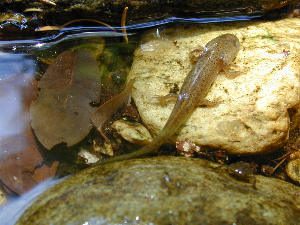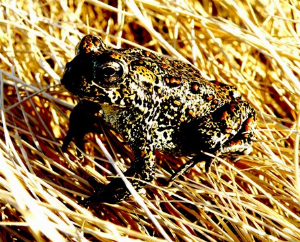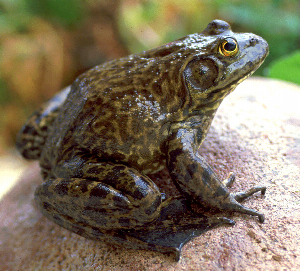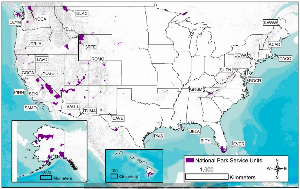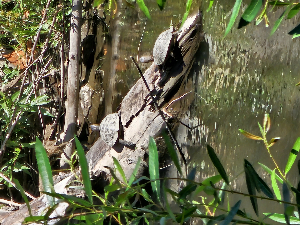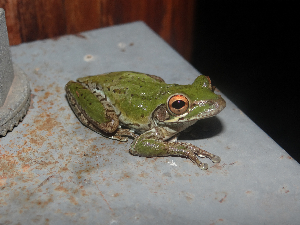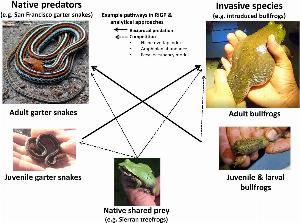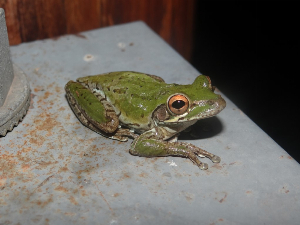Search ARMI Database
Search term(s)
Contribution Number
Search Results
79 record(s) found.
Papers & Reports Bayesian networks facilitate updating of species distribution and habitat suitability models
Authors: Adam Duarte; Robert S Spaan; James T Peterson; Christopher A Pearl; Michael J Adams
Date: 2024-12-06 | Outlet: Ecological Modelling
Managers often rely on predictions of species distributions and habitat suitability to inform conservation and management decisions. Although numerous approaches are available to develop models to make these predictions, few approaches exist to update existing models as new data accumulate. There is a need for updatable models to ensure good modeling practices in an aim to keep pace with change in the environment and change in data availability to continue to use the best-available science to inform decisions. We demonstrated a workflow to deliver predictive models to user groups within Bayesian networks, allowing models to be used to make predictions across new sites and to be easily updated with new data. To demonstrate this workflow, we focus on species distribution and habitat suitability models given their importance to informing conservation strategies across the globe. In particular, we followed a standard process of collating species encounter data available in online databases and ancillary covariate data to develop a habitat suitability model. We then used this model to parameterize a Bayesian network and updated the model with new data to predict species presence in a new focal ecoregion. We found the network updated relatively quickly as new data were incorporated, and the overall error rate generally decreased with each model update. Our approach allows for the formal incorporation of new data into predictions to help ensure model predictions are based on all relevant data available, regardless of whether they were collected after initial model development. Although our focus is on species distribution and habitat suitability models to inform conservation efforts, the workflow we describe herein can easily be applied to any use case where model uncertainty reduction and increased model prediction accuracy are desired via model updating as new data become available. Thus, our paper describes a generalizable workflow to implement model updating, which is widely recognized as a good modeling practice but is also underutilized in applied ecology.
Papers & Reports Assessing amphibian richness, rarity, threats, and conservation prospects for U.S. national park network [UPDATE TITLE]
Authors: Benjamin Lafrance; Andrew M Ray; Michael T Tercek; Robert N Fisher; Blake R Hossack
Date: 2024-11 | Outlet: npj Biodiversity
We assessed amphibian diversity, rarity, and threats across the U.S. National Park System, which covers 3.5% of the U.S. and 12% of federal lands. At least 230 of 354 (65%) amphibian species native to the U.S. occur in parks. Of the species documented in parks, 17% are considered at-risk globally and 20% are uncategorized, reflecting still-widespread data deficiencies. Parks in the Northwest and Northeast accumulated species most quickly (i.e., steepest species?area relationships). Non-native crayfishes and amphibians occur within 50 km of 60% and 25% of parks, respectively, illustrating the broad threat of non-native predators. Projected mid-century (2040–2069) changes in climatic water deficit, based on 25 climate futures, produced an expected 34% increase in dryness across all parks in the contiguous U.S. territory. Our analyses highlight the extent and regional differences in current and future threats and reveal gaps in species protection, but also reveal opportunities for targeted expansion and active management.
Papers & Reports Amphibian Diversity of the Colorado Canyonlands including Potential Threats from Non-native Bullfrogs and Disease
Authors: Weeks Denita; David S Pilliod; Madeline Grant-Hoffman; Anjelica Q Spencer; Dan Neubaum; Paul Hampton; Michaela R Grossklaus; Matthew B Laramie
Ephemeral streams (hereafter, creeks) along the sandstone canyons of the Colorado and Uncompahgre Plateau provide habitat and breeding sites for native amphibians, although little is known about the diversity and distribution of amphibians that live in these harsh, dynamic environments. In addition, rivers that border these canyon tributaries serve as corridors for non-native species and disease. The American bullfrog (Lithobates catesbeianus) is a non-native species in western Colorado known to prey on native amphibians and act as a reservoir for pathogens such as Batrachochytrium dendrobatidis (Bd). From 2019-2022, we surveyed for amphibians using visual encounter surveys (VES) and eDNA surveys throughout the McInnis Canyon National Conservation Area (MCNCA), the Dominguez-Escalante National Conservation Area, and the Dolores River Canyon Wildlife Study Area. Our primary goals were to document the diversity and distribution of native amphibians in the canyonlands and evaluate possible threats to these species from bullfrogs and Bd. We found direct (VES) and indirect (eDNA) evidence that sensitive species, such as the Great Basin spadefoot (Spea intermontana) and the Northern leopard frog (Lithobates pipiens), inhabit these protected canyons. Most of the ephemeral tributaries did not support bullfrog populations, although we often detected them where the tributaries joined the rivers. In Mee Canyon (MCNCA), however, bullfrogs appear to migrate upstream into the canyon tributary in some years. A bullfrog individual also tested positive for Bd from Mee Canyon in 2019 and diet contents indicated that bullfrogs prey on native amphibians in this system. While non-native predators and disease are a concern for these ephemeral desert tributaries, they are likely minor relative to other threats such as drought and hydrological changes associated with ongoing climate change.
Papers & Reports Native amphibian toxin reduces invasive crayfish feeding with potential benefits to stream biodiversity
Authors: Gary Bucciarelli; Sierra J. Smith; Justin J. Choe; Phoebe D. Shin; Robert N Fisher; Lee B Kats
Date: 2023-09-13 | Outlet: BMC Ecology and Evolution 23, 51
Biodiversity is generally reduced when non-native species invade an ecosystem. Invasive crayfish, Procambarus clarkii, populate California freshwater streams, and in the Santa Monica Mountains (Los Angeles, USA), their introduction has led to trophic cascades due to omnivorous feeding behavior and a rapid rate of population growth. The native California newt, Taricha torosa, possesses a neurotoxin, tetrodotoxin (TTX), that affects freshwater animal behavior. Given P. clarkii has a limited evolutionary history with TTX, we hypothesized that TTX may affect crayfish feeding behaviors. To determine if TTX affects P. clarkii behavior, we measured cumulative movement and various feeding behaviors of P. clarkii exposed to (i) waterborne, ecologically realistic concentrations of TTX (~?3.0?×?10??8 moles/L), (ii) an anuran chemical cue to account for intraguild cues, or (iii) a T. torosa chemical cue with quantitated TTX in it (~?6.2?×?10??8 moles/L).
Results
We found that the presence of TTX in any form significantly reduced crayfish movement and decreased the amount of food consumed over time. Crayfish responses to the anuran treatment did not significantly differ from controls.
Conclusion
Our laboratory results show that naturally occurring neurotoxin from native California newts limits invasive crayfish foraging and feeding rates, which may play a role in preserving local stream ecosystems by limiting invasive crayfish behaviors that are detrimental to biodiversity.
Results
We found that the presence of TTX in any form significantly reduced crayfish movement and decreased the amount of food consumed over time. Crayfish responses to the anuran treatment did not significantly differ from controls.
Conclusion
Our laboratory results show that naturally occurring neurotoxin from native California newts limits invasive crayfish foraging and feeding rates, which may play a role in preserving local stream ecosystems by limiting invasive crayfish behaviors that are detrimental to biodiversity.
Papers & Reports BioLake: A first assessment of lake temperature-derived bioclimatic predictors for aquatic invasive species
Authors: Ryan C Burner; Wesley M. Daniel; Peder S. Engelstad; Christopher J. Churchill; Richard E Erickson
Date: 2023-07-10 | Outlet: Ecosphere 14(7):e4616
Aquatic invasive species (AIS) present major ecological and economic challenges globally, endangering ecosystems and human livelihoods. Managers and policy makers thus need tools to predict invasion risk and prioritize species and areas of concern, and they often use native range climate matching to determine whether a species could persist in a new location. However, climate matching for AIS often relies on air temperature rather than water temperature due to a lack of global water temperature data layers, and predictive power of models is seldom evaluated. We developed 12 global lake (water) temperature-derived “BioLake” bioclimatic layers for distribution modeling of aquatic species and compared “climatch” climate matching predictions (from climatchR package) from BioLake with those based on BioClim temperature layers and with a null model. We did this for 73 established AIS in the United States, training the models on their ranges outside of the United States and Canada. Models using either set of climate layers outperformed the null expectation by a similar (but modest) amount on average, but some species were occasionally found in locations with low climatch scores. Mean US climatch scores were higher for most species when using air temperature. Including additional climate layers in models reduced mean climatch scores, indicating that commonly used climatch score thresholds are not absolute but can be context specific and may require calibration based upon climate data used. Although finer resolution global lake temperature data would likely improve predictions, our BioLake layers provide a starting point for aquatic species distribution modeling. Climate matching was most effective for some species that originated at low latitudes or had small ranges. Climatch scores remain useful but limited for predicting AIS risk, perhaps because current ranges seldom fully reflect climatic tolerances (fundamental niches). Managers could consider climate matching as one of a suite of tools that can be used in AIS prioritization.
Papers & Reports Successful eradication of invasive American bullfrogs leads to co-extirpation of emerging pathogens
Authors: Blake R Hossack; D Hall; C L Crawford; Caren S Goldberg; Erin Muths; Brent H Sigafus; Thierry C Chambert
Date: 2023 | Outlet: Conservation Letters
Interventions of host-pathogen dynamics provide strong tests of relationships, yet they are still rarely applied across multiple populations. After American Bullfrogs (Rana catesbeiana) invaded a wildlife refuge where federally threatened Chiricahua Leopard Frogs (R. chiricahuensis) were reintroduced 12 years prior, managers launched a landscape-scale eradication effort to help ensure continued recovery of the native species. We used a before-after-control-impact (BACI) design and environmental DNA sampling of 19 eradication sites and 18 control sites between fall 2016 and winter 2020–2021 to measure community-level responses to bullfrog eradication, including for 2 pathogens. Dynamic occupancy models revealed successful eradication from 94% of treatment sites. Native amphibians did not respond to bullfrog eradication, but the pathogens amphibian chytrid fungus (Batrachochytrium dendrobatidis) and ranaviruses were co-extirpated with bullfrogs. Our spatially replicated experimental approach provides strong evidence that management of invasive species can simultaneously reduce predation and disease risk for imperiled species.
Papers & Reports Prioritizing the risk and management of introduced species in a landscape with high indigenous biodiversity
Authors: Jonathan Q Richmond; Jennifer Kingston; Brittany Ewing; Wendy Bear; Stacie A Hathaway; Cedric Lee; Camm C. Swift; Kristine L Preston; Allison J Schultz; Barbara E. Kus; Kerwin Russel; Philip Unitt; B Hollingsworth; Robert E Espinoza; Michael Wall; S Tremor; Kai Palenscar; Robert N Fisher
Date: 2023 | Outlet: Bulletin of the Southern California Academy of Sciences
Risk analysis protocols for prioritizing the management of non-native species are numerous, yet few incorporate risk and management in the same analysis or accommodate a broad diversity of taxa outside of a specific geographic area. We adapted a protocol that accounts for these factors to address non-native animal species in the Southern California/Northern Baja California Coast Ecoregion near the international border in San Diego County, an area with high indigenous biodiversity and high numbers of species of conservation concern. This stepwise, semi-quantitative protocol is applicable to any animal group in any predefined geographic area, relies on consensus-building among taxonomic experts, and has been vetted through previous use and in peer-reviewed literature. Our results show that the final prioritization was driven mainly by management feasibility, with top-ranked species having multitrophic effects that favor other non-native invaders over native residents. Conditions within the assessment area required some modification to the protocol as it was originally designed, namely a shift in emphasis from eradication to control, given that eradication is implausible for most non-native species in the assessment area. We call attention to taxon-specific issues that surfaced during the analysis, identify areas for improvement in this first-ever risk assessment for invasive animal species in the Natural Communities Conservation Plan/Habitat Conservation Plan (NCCP/HCP) reserve system of San Diego County, and provide suggestions for further refinement of the protocol. This study builds on the effort to standardize risk analysis for invasive species globally, given that many of the same invaders present threats to indigenous biodiversity worldwide.
Papers & Reports Keeping the Heat On: Weighted Surveillance for Chytrid Fungus in Dixie Valley Toads
Authors: Matthew J Forrest; Brian J Halstead; Daniel A Grear; Patrick M Kleeman; Brian D Todd; Oliver J Miano; Kris Urquhart
Date: 2023-07-24 | Outlet: Journal of Wildlife Diseases
Introduced fungal pathogens have caused declines and extinctions of naive wildlife populations across vertebrate classes. Consequences of introduced pathogens to hosts with small ranges might be especially severe because of limited redundancy to rescue populations and lower abundance that may limit the resilience of populations to perturbations like disease introduction. As a complement to biosecurity measures to prevent the spread of pathogens, surveillance programs may enable early detection of pathogens, when management actions to limit the effects of pathogens on naïve hosts might be most bene?cial. We analyzed surveillance data for the endangered and narrowly endemic Dixie Valley toad (Anaxyrus [= Bufo] williamsi) from two time periods (2011–2014 and 2019–2021) to estimate the minimum detectable prevalence of the amphibian fungal pathogen Batrachochytrium dendrobatidis (Bd). We assessed if detection ef?ciency could be improved by using samples from both Dixie Valley toads and co-occurring introduced American bullfrogs (Lithobates catesbeianus) and literature-derived surveillance weights. We further evaluated a weighted surveillance design to increase the efficiency of surveillance efforts for Bd within the toad’s small (<6km2) range. We found that monitoring adult and larval American bullfrogs would probably detect Bd more ef?ciently than monitoring Dixie Valley toads alone. Given that no Bd was detected, minimum detectable prevalence of Bd was <3% in 2011–2014, and <5% (Dixie Valley toads only) and <10% (American bullfrogs only) in 2019–2021. Optimal management for Bd depends on the mechanisms underlying its apparent absence from the range of Dixie Valley toads, but a balanced surveillance scheme that includes sampling American bullfrogs to increase the likelihood of detecting Bd, and adult Dixie Valley toads to ensure broad spatial coverage where American bullfrogs do not occur, would probably result in ef?cient surveillance, which might permit timely management of Bd if it is detected.
Papers & Reports Empirical evidence for effects of invasive American Bullfrogs on occurrence of native amphibians and emerging pathogens
Authors: Blake R Hossack; Emily B Oja; Audrey Owens; D Hall; C L Crawford; Caren S Goldberg; S Hedwall; J A Lemos-Espinal; S MacVean; Magnus McCaffery; Erin Muths; A McCall; C Mosley; Brent H Sigafus; M J Sredl,; James C Rorabaugh
Date: 2023 | Outlet: Ecological Applications
Invasive species and emerging infectious diseases are two of the greatest
threats to biodiversity. American Bullfrogs (Rana [Lithobates] catesbeiana),
which have been introduced to many parts of the world, are often linked with
declines in native amphibians via predation and the spread of emerging pathogens
such as amphibian chytrid fungus (Batrachochytrium dendrobatidis [Bd])
and ranaviruses. Although many studies have investigated the potential role of
bullfrogs in the decline of native amphibians, analyses that account for shared
habitat affinities and imperfect detection have found limited support for
clear effects. Similarly, the role of bullfrogs in shaping the patch-level distribution
of pathogens is unclear. We used eDNA methods to sample 233 sites in the southwestern USA and Sonora, Mexico (2016–2018) to estimate how
the presence of bullfrogs affects the occurrence of four native amphibians,
Bd, and ranaviruses. Based on two-species, dominant-subordinate occupancy
models fitted in a Bayesian context, federally threatened Chiricahua Leopard
Frogs (Rana chiricahuensis) and Western Tiger Salamanders (Ambystoma
mavortium) were eight times (32% vs. 4%) and two times (36% vs. 18%), respectively,
less likely to occur at sites where bullfrogs occurred. Evidence for the
negative effects of bullfrogs on Lowland Leopard Frogs (Rana yavapaiensis)
and Northern Leopard Frogs (Rana pipiens) was less clear, possibly because of
smaller numbers of sites where these native species still occurred and because
bullfrogs often occur at lower densities in streams, the primary habitat for
Lowland Leopard Frogs. At the community level, Bd was most likely to occur
where bullfrogs co-occurred with native amphibians, which could increase the
risk to native species. Ranaviruses were estimated to occur at 33% of bullfrogonly
sites, 10% of sites where bullfrogs and native amphibians co-occurred,
and only 3% of sites where only native amphibians occurred. Of the 85 sites
where we did not detect any of the five target amphibian species, we also did
not detect Bd or ranaviruses; this suggests other hosts do not drive the distribution
of these pathogens in our study area. Our results provide landscape-scale
evidence that bullfrogs reduce the occurrence of native amphibians and
increase the occurrence of pathogens, information that can clarify risks and
aid the prioritization of conservation actions.
threats to biodiversity. American Bullfrogs (Rana [Lithobates] catesbeiana),
which have been introduced to many parts of the world, are often linked with
declines in native amphibians via predation and the spread of emerging pathogens
such as amphibian chytrid fungus (Batrachochytrium dendrobatidis [Bd])
and ranaviruses. Although many studies have investigated the potential role of
bullfrogs in the decline of native amphibians, analyses that account for shared
habitat affinities and imperfect detection have found limited support for
clear effects. Similarly, the role of bullfrogs in shaping the patch-level distribution
of pathogens is unclear. We used eDNA methods to sample 233 sites in the southwestern USA and Sonora, Mexico (2016–2018) to estimate how
the presence of bullfrogs affects the occurrence of four native amphibians,
Bd, and ranaviruses. Based on two-species, dominant-subordinate occupancy
models fitted in a Bayesian context, federally threatened Chiricahua Leopard
Frogs (Rana chiricahuensis) and Western Tiger Salamanders (Ambystoma
mavortium) were eight times (32% vs. 4%) and two times (36% vs. 18%), respectively,
less likely to occur at sites where bullfrogs occurred. Evidence for the
negative effects of bullfrogs on Lowland Leopard Frogs (Rana yavapaiensis)
and Northern Leopard Frogs (Rana pipiens) was less clear, possibly because of
smaller numbers of sites where these native species still occurred and because
bullfrogs often occur at lower densities in streams, the primary habitat for
Lowland Leopard Frogs. At the community level, Bd was most likely to occur
where bullfrogs co-occurred with native amphibians, which could increase the
risk to native species. Ranaviruses were estimated to occur at 33% of bullfrogonly
sites, 10% of sites where bullfrogs and native amphibians co-occurred,
and only 3% of sites where only native amphibians occurred. Of the 85 sites
where we did not detect any of the five target amphibian species, we also did
not detect Bd or ranaviruses; this suggests other hosts do not drive the distribution
of these pathogens in our study area. Our results provide landscape-scale
evidence that bullfrogs reduce the occurrence of native amphibians and
increase the occurrence of pathogens, information that can clarify risks and
aid the prioritization of conservation actions.
Papers & Reports Invasive bullfrogs maintain MHC polymorphism including alleles associated with chytrid fungal infection
Authors: Jacob LaFond; Katherine R Martin; Hollis Dahn; Jonathan Q Richmond; Robert W Murphy; Njal Rollinson; Anna E Savage
Date: 2022-05-19 | Outlet: Integrative and Comparative Biology 62:262–274
Maintenance of genetic diversity at adaptive loci may facilitate invasions by non-native species by allowing populations to adapt to novel environments, despite the loss of diversity at neutral loci that typically occurs during founder events. To evaluate this prediction, we compared genetic diversity at major histocompatibility complex (MHC) and cytochrome b (cytb) loci from 20 populations of the American bullfrog (Rana catesbeiana) across the invasive and native ranges in North America and quantified the presence of the pathogen Batrachochytrium dendrobatidis (Bd). Compared to native populations, invasive populations had significantly higher Bd prevalence and intensity, significantly higher pairwise MHC and cytb FST, and significantly lower cytb diversity, but maintained similar levels of MHC diversity. The two most common MHC alleles (LiCA_B and Rapi_33) were associated with a significant decreased risk of Bd infection, and we detected positive selection acting on four peptide binding residues. Phylogenetic analysis suggested invasive populations likely arose from a single founding population in the American Midwest with a possible subsequent invasion in the northwest. Overall, our study suggests that the maintenance of diversity at adaptive loci may contribute to invasion success and highlights the importance of quantifying diversity at functional loci to assess the evolutionary potential of invasive populations.
Papers & Reports Looking ahead, guided by the past: The role of U.S. national parks in amphibian research and conservation
Authors: Brian J Halstead; Andrew M Ray; Erin Muths; Evan HC Grant; Rob L Grasso; Michael J Adams; Katy S Delaney; Jane Carlson; Blake R Hossack
Date: 2022-03 | Outlet: Ecological Indicators
Protected areas like national parks are essential elements of conservation because they limit human influence on the landscape, which protects biodiversity and ecosystem function. The role of national parks in conservation, however, often goes far beyond limiting human influence. The U.S. National Park Service and its system of land units contribute substantively to conservation by providing protected lands where researchers can document trends in species distributions and abundances, examine characteristics important for generating these trends, and identify and implement conservation strategies to preserve biodiversity. We reviewed the contribution of U.S. national parks to amphibian research and conservation and highlight important challenges and findings in several key areas. First, U.S. national parks were instrumental in providing strong support that amphibian declines were real and unlikely to be simply a consequence of habitat loss. Second, research in U.S. national parks provided evidence against certain hypothesized causes of decline, like UV-B radiation, and evidence for others, such as introduced species and disease. However, describing declines and identifying causes contributes to conservation only if it leads to management; importantly, U.S. national parks have implemented many conservation strategies and evaluated their effectiveness in recovering robust amphibian populations. Among these, removal of invasive species, especially fishes; conservation translocations; and habitat creation and enhancement stand out as examples of successful conservation strategies with broad applicability. Successful management for amphibians is additionally complicated by competing mandates and stakeholder interests; for example, past emphasis on increasing visitor enjoyment by introducing fish to formerly fishless lakes had devastating consequences for many amphibians. Other potential conflicts with amphibian conservation include increasing development, increased risk of introductions of disease and exotic species with increased visitation, and road mortality. Decision science and leveraging partnerships have proven to be key components of effective conservation under conflicting mandates in national parks. As resource managers grapple with large-scale drivers that are outside local control, public-private partnerships and adaptive strategies are increasing in importance. U.S. national parks have played an important role in many aspects of identifying and ameliorating the amphibian decline crisis and will continue to be essential for the conservation of amphibians in the future.
Papers & Reports Impacts of a Non-indigenous Ecosystem Engineer, the American Beaver (Castor canadensis), in a Biodiversity Hotspot
Authors: Jonathan Q Richmond; Camm C. Swift; Thomas A. Wake; Cheryl S Brehme; Kristine L Preston; Barbara E. Kus; Edward L Ervin; S Tremor; Tritia Matsuda; Robert N Fisher
Date: 2021-11-18 | Outlet: Frontiers in Conservation Science 2:752400
Non-native species having high per capita impacts in invaded communities are those that modulate resource availability and alter disturbance regimes in ways that are biologically incompatible with the native biota. In areas where it has been introduced by humans, American beaver (Castor canadensis) is an iconic example of such species due to its capacity to alter trophic dynamics of entire ecosystems and create new invasional pathways for other non-native species. The species is problematic in several watersheds within the Southern California-Northern Baja California Coast Ecoregion, a recognized hotspot of biodiversity, due to its ability to modify habitat in ways that favor invasive predators and competitors over the region's native species and habitat. Beaver was deliberately introduced across California in the mid-1900s and generally accepted as non-native to the region up to the early 2000s; however, articles promoting the idea that beaver may be a natural resident have gained traction in recent years, due in large part to the species' charismatic nature rather than by presentation of sound evidence. Here, we discuss the problems associated with beaver disturbance and its effects on conserving the region's native fauna and flora. We refute arguments underlying the claim that beaver is native to the region, and review paleontological, zooarchaeological, and historical survey data from renowned field biologists and naturalists over the past ~160 years to show that no evidence exists that beaver arrived by any means other than deliberate human introduction. Managing this ecosystem engineer has potential to reduce the richness and abundance of other non-native species because the novel, engineered habitat now supporting these species would diminish in beaver-occupied watersheds. At the same time, hydrologic functionality would shift toward more natural, ephemeral conditions that favor the regions' native species while suppressing the dominance of the most insidious invaders.
Papers & Reports Site- and individual-level contamination affects infection prevalence of an emerging infectious disease of amphibians
Authors: Kelly L Smalling; Brittany A Mosher; L Iwanowicz; Keith A Loftin; Adam Boehlke; C R Muletz; N Cortes-Rodriguez; R Femmer; Evan HC Grant
Date: 2022-01-09 | Outlet: Environmental Toxicology and Chemistry
Emerging infectious disease outbreaks are one of multiple stressors responsible for amphibian declines globally. In the northeastern United States, ranaviral diseases are prevalent in amphibians and other ectothermic species, but there is still uncertainty as to whether their presence is leading to population level effects. Further, there is also uncertainty surrounding the potential interactions among disease infection prevalence in free-ranging animals and habitat degradation (co-occurrence of chemical stressors). The current study was designed to provide field-based estimates of the relationship between amphibian disease and chemical stressors. We visited 40 wetlands across three protected areas, estimated the prevalence of ranavirus among populations of larval wood frogs and spotted salamanders, and assessed chemical and biological stressors in wetland habitats and larval amphibians using a suite of selected bioassays, screening tools and chemical analyses. Estimated ranavirus occupancy varied among the three protected areas and ranged from https://0.27 to https://0.55 with considerable variation within protected area. Of the stressors evaluated, ranavirus prevalence was strongly and positively related to concentrations of metalloestrogens (metals with the potential to bind to estrogen receptors) and total metals in wetland sediments and weakly and negatively related to total pesticide concentrations in larval amphibians. These results can be used by land managers to refine habitat assessments to include such environmental factors with the potential to influence disease susceptibility.
Papers & Reports Conservation of Northwestern and Southwestern Pond Turtles: Threats, Population Size Estimates, and Population Viability Analysis
Authors: S Manzo; E Nicholson; Z Devereux; Robert N Fisher; Christopher W Brown; P Scott; H B Shaffer
Date: 2021-12 | Outlet: Journal of Fish and Wildlife Management 12(2):485-501;e1944-687X
Accurate status assessments of long-lived, widely distributed taxa depend on the availability of long-term monitoring data from multiple populations. However, monitoring populations across large temporal and spatial scales is often beyond the scope of any one researcher or research group. Consequently, wildlife managers may be tasked with utilizing limited information from different sources to detect range-wide evidence of population declines and their causes. When assessments need to be made under such constraints, the research and management communities must determine how to extrapolate from variable population data to species-level inferences. Here, using three different approaches, we integrate and analyze data from the peer-reviewed literature and government agency reports to inform conservation for northwestern pond turtles (NPT) Actinemys marmorata and southwestern pond turtles (SPT) Actinemys pallida. Both NPT and SPT are long-lived freshwater turtles distributed along the west coast of the United States and Mexico. Conservation concerns exist for both species; however, SPT may face more severe threats and are thought to exist at lower densities throughout their range than NPT. For each species, we ranked the impacts of 13 potential threats, estimated population sizes, and modeled population viability with and without long-term droughts. Our results suggest that predation of hatchlings by invasive predators, such as American bullfrogs Lithobates catesbeianus and Largemouth Bass Micropterus salmoides, is a high-ranking threat for NPT and SPT. Southwestern pond turtles may also face more severe impacts associated with natural disasters (droughts, wildfires, and floods) than do NPT. Population size estimates from trapping surveys indicate that SPT have smaller population sizes on average than do NPT (P = 0.0003), suggesting they may be at greater risk of local extirpation. Population viability analysis models revealed that long-term droughts are a key environmental parameter; as the frequency of severe droughts increases with climate change, the likelihood of population recovery decreases, especially when census sizes are low. Given current population trends and vulnerability to natural disasters throughout their range, we suggest that conservation and recovery actions first focus on SPT to prevent further population declines.
Papers & Reports Resilience of native amphibian communities following catastrophic drought: evidence from a decade of regional-scale monitoring
Authors: W Moss; T McDevitt-Galles; Erin Muths; Steven Bobzien; J Purificato; P TJ Johnson
1. The increasing frequency and severity of drought has the potential to exacerbate existing global amphibian declines. However, interactions between drought and coincident stressors, coupled with high interannual variability in amphibian abundances, can mask the extent and underlying mechanisms of drought-induced declines. The application of dynamic occupancy modeling to longitudinal monitoring data estimates the effect of specific variables on population change, providing key insights into potential management strategies for drought resilience.
2. We synthesized a decade (2009 – 2019) of amphibian survey data from multiple monitoring programs across the California Bay Area and used occupancy modeling to estimate the influence of drought, invasive species, and land use on species’ persistence and colonization probabilities. The geographic and temporal scale of our dataset, consisting of 2574 surveys of seven species in 473 ponds, allowed us to quantify regional trends for an entire community of pond-breeding amphibians.
3. An extreme drought from 2012 – 2015 resulted in losses of breeding sites, with 51% of ponds drying in 2014 compared to <10% in non-drought years. Pond drying reduced persistence rates, and nearly every species exhibited reduced occupancy during the drought, with some species (American bullfrogs and California newts) declining by > 25%. Drought reduced occupancy via additional mechanisms beyond habitat loss; for example, lower spring precipitation (an important cue for breeding) was associated with reduced colonization.
4. During drought, native species’ persistence was higher in permanent relative to temporary ponds, even though these sites were also more likely to contain invasive fish and bullfrogs, which generally reduced native amphibian occupancy. Many of these permanent ponds dried during the worst year of drought, leading to extirpations of invasive species that appeared long-lasting. In contrast, native species rebounded quickly with returning rains and showed evidence of full recovery.
5. Synthesis and applications: Despite experiencing one of most severe droughts in a millennium, native species displayed high resilience. Due to longer recovery times by non-native relative to native species, drought presents a valuable management opportunity to remove invaders from key refugia, and we highlight the value of maintaining hydroperiod diversity to promote the persistence of multiple species.
2. We synthesized a decade (2009 – 2019) of amphibian survey data from multiple monitoring programs across the California Bay Area and used occupancy modeling to estimate the influence of drought, invasive species, and land use on species’ persistence and colonization probabilities. The geographic and temporal scale of our dataset, consisting of 2574 surveys of seven species in 473 ponds, allowed us to quantify regional trends for an entire community of pond-breeding amphibians.
3. An extreme drought from 2012 – 2015 resulted in losses of breeding sites, with 51% of ponds drying in 2014 compared to <10% in non-drought years. Pond drying reduced persistence rates, and nearly every species exhibited reduced occupancy during the drought, with some species (American bullfrogs and California newts) declining by > 25%. Drought reduced occupancy via additional mechanisms beyond habitat loss; for example, lower spring precipitation (an important cue for breeding) was associated with reduced colonization.
4. During drought, native species’ persistence was higher in permanent relative to temporary ponds, even though these sites were also more likely to contain invasive fish and bullfrogs, which generally reduced native amphibian occupancy. Many of these permanent ponds dried during the worst year of drought, leading to extirpations of invasive species that appeared long-lasting. In contrast, native species rebounded quickly with returning rains and showed evidence of full recovery.
5. Synthesis and applications: Despite experiencing one of most severe droughts in a millennium, native species displayed high resilience. Due to longer recovery times by non-native relative to native species, drought presents a valuable management opportunity to remove invaders from key refugia, and we highlight the value of maintaining hydroperiod diversity to promote the persistence of multiple species.
Papers & Reports Widespread Ranavirus and Perkinsea infections in Cuban Treefrogs (Osteopilus septentrionalis) invading New Orleans, USA
Authors: N Galt; Matthew S Atkinson; Brad M Glorioso; Hardin J Waddle; M Litton; Anna E Savage
Date: 2021-04-30 | Outlet: Herpetological Conservation and Biology
Papers & Reports When Introduced Prey Violates Trophic Hierarchy: Conservation of an Endangered Predator
Authors: Richard Kim; Brian J Halstead; E Routman; Julie Andersen
Date: 2021-03-03 | Outlet: Biological Conservation 256
Introduced species often disrupt established food webs, but some native predators can come to rely on introduced prey. Understanding the net effects of the non-natives on imperiled predators is crucial for planning conservation measures. The invasive American bullfrog (Lithobates catesbeianus) can be prey, predator, and competitor for the critically endangered San Francisco garter snake (Thamnophis sirtalis tetrataenia). We examined the seasonal prey use of a San Francisco garter snake population that co-occurs with American bullfrogs to examine intraguild predation between these species. Juvenile and adult snakes mainly consumed native anurans instead of American bullfrogs, and this diet pattern peaked in spring, a critical foraging period for the snakes. In spring, large adult American bullfrogs also foraged heavily on native anurans and displayed a high degree of diet overlap with San Francisco garter snakes. Invasive American bullfrogs are detrimental to San Francisco garter snakes mainly through seasonal competition rather than reciprocal predation. Removal of invasive species provided further evidence that eliminating American bullfrogs can benefit San Francisco garter snakes by reducing predation pressure on their shared amphibian prey. Better understanding the interactions of invasive species with native species of conservation concern informs management practices and improves conservation outcomes.
Papers & Reports Slender salamanders (genus Batrachoseps) reveal Southern California to be a center for the diversification, persistence, and introduction of salamander lineages
Authors: E Jockusch; R Hansen; Robert N Fisher; D B Wake
Date: 2020-08-14 | Outlet: PeerJ 8:e9599
Background. The southern California biodiversity hotspot has had a complex geological history, with both plate tectonic forces and sea level changes repeatedly reconfiguring the region, and likely driving both lineage splittings and extinctions. Here we investigate patterns of genetic divergence in two species of slender salamanders (Plethodontidae: Batrachoseps) in this region. The complex geological history in combination with several organismal traits led us to predict that these species harbor multiple ancient mitochondrial lineages endemic to southern California. These species belong to a clade characterized by fine-scale mitochondrial structure, which has been shown to track ancient splits. Both focal species, Batrachoseps major and B. nigriventris, are relatively widely distributed in southern California, and estimated to have persisted there across millions of years. Recently several extralimital populations of Batrachoseps were found in the San Joaquin Valley of California, a former desert area that has been extensively modified for agriculture. The origins of these populations are unknown, but based on morphology, they are hypothesized to result from human-mediated introductions of B. major.
Methods. We sequenced the mitochondrial gene cytochrome b from a geographically comprehensive sampling of the mitochondrial lineages of B. major and B. nigriventris that are endemic to southern California. We used phylogenetic analyses to characterize phylogeographic structure and identify mitochondrial contact zones. We also included the San Joaquin Valley samples to test whether they resulted from introductions. We used a bootstrap resampling approach to compare the strength of isolation-by-distance in both Batrachoseps species and four other salamander species with which they co-occur in southern California.
Results. The northern lineage of B. major harbors at least eight deeply differentiated, geographically cohesive mitochondrial subclades. We identify geographic contact between many of these mtDNA lineages and some biogeographic features that are concordant with lineage boundaries. Batrachoseps nigriventris also has multiple deeply differentiated clades within the region. Comparative analyses highlight the smaller spatial scales over which mitochondrial divergence accumulates in Batrachoseps relative to most other salamander species in southern California. The extralimital populations of Batrachoseps from the San Joaquin Valley are assigned to B. major based on their mitochondrial haplotypes and are shown to result from at least two independent introductions from different source populations. We also suggest that B. major on Catalina Island, where it is considered native, may be the result of an introduction. Some of the same traits that facilitate the build-up of deep phylogeographic structure in Batrachoseps likely also contribute to its propensity for introductions, and we anticipate that additional introduced populations will be discovered.
Methods. We sequenced the mitochondrial gene cytochrome b from a geographically comprehensive sampling of the mitochondrial lineages of B. major and B. nigriventris that are endemic to southern California. We used phylogenetic analyses to characterize phylogeographic structure and identify mitochondrial contact zones. We also included the San Joaquin Valley samples to test whether they resulted from introductions. We used a bootstrap resampling approach to compare the strength of isolation-by-distance in both Batrachoseps species and four other salamander species with which they co-occur in southern California.
Results. The northern lineage of B. major harbors at least eight deeply differentiated, geographically cohesive mitochondrial subclades. We identify geographic contact between many of these mtDNA lineages and some biogeographic features that are concordant with lineage boundaries. Batrachoseps nigriventris also has multiple deeply differentiated clades within the region. Comparative analyses highlight the smaller spatial scales over which mitochondrial divergence accumulates in Batrachoseps relative to most other salamander species in southern California. The extralimital populations of Batrachoseps from the San Joaquin Valley are assigned to B. major based on their mitochondrial haplotypes and are shown to result from at least two independent introductions from different source populations. We also suggest that B. major on Catalina Island, where it is considered native, may be the result of an introduction. Some of the same traits that facilitate the build-up of deep phylogeographic structure in Batrachoseps likely also contribute to its propensity for introductions, and we anticipate that additional introduced populations will be discovered.
Papers & Reports OSTEOPILUS SEPTENTRIONALIS (Cuban Treefrog)
Authors: Brad M Glorioso; P Vanbergen; J Roy; M Walter; L Leonpacher; M Freistak
Date: 2018 | Outlet: Herpetological Review 49(1):70-71
A note on the geographic distribution of the Cuban Treefrog (Osteopilus septentrionalis), describing new parish records in East Baton Rouge Parish and Lafayette Parish.
Papers & Reports Historical museum collections and contemporary population studies implicate roads and introduced predatory bullfrogs in the decline of western pond turtles
Authors: E Nicholson; S Manzo; Z Devereux; T Morgan; Robert N Fisher; Christopher W Brown; Rosi G Dagit; P Scott; H Shaffer
Date: 2020-06-12 | Outlet: PeerJ 8:e9248 DOI 10.7717/peerj.9248
The western pond turtle (WPT), recently separated into two paripatrically distributed species (Emys pallida and Emys marmorata), is experiencing significant reductions in its range and population size. In addition to habitat loss, two potential causes of decline are female-biased road mortality and high juvenile mortality from non-native predatory bullfrogs (Rana catesbeiana). However, quantitative analyses of these threats have never been conducted for either species of WPT. We used a combination of historical museum samples and published and unpublished field studies shared with us through personal communications with WPT field researchers (B Shaffer, P Scott, R Fisher, C Brown, R Dagit, L Patterson, T Engstrom, 2019, personal communications) to quantify the effect of roads and bullfrogs on WPT populations along the west coast of the United States. Both species of WPT shift toward increasingly male biased museum collections over the last century, a trend consistent with increasing, female-biased road mortality. Recent WPT population studies revealed that road density and proximity were significantly associated with increasingly male-biased sex ratios, further suggesting female-biased road mortality. The mean body size of museum collections of E. marmorata, but not E. pallida, has increased over the last 100 years, consistent with reduced recruitment and aging populations that could be driven by invasive predators. Contemporary WPT population sites that co-occur with bullfrogs had significantly greater average body sizes than population sites without bullfrogs, suggesting strong bullfrog predation on small WPT hatchlings and juveniles. Overall, our findings indicate that both species of WPT face demographic challenges which would have been difficult to document without the use of both historical data from natural history collections and contemporary demographic field data. Although correlational, our analyses suggest that female-biased road mortality and predation on small turtles by non-native bullfrogs are occurring, and that conservation strategies reducing both may be important for WPT recovery.


